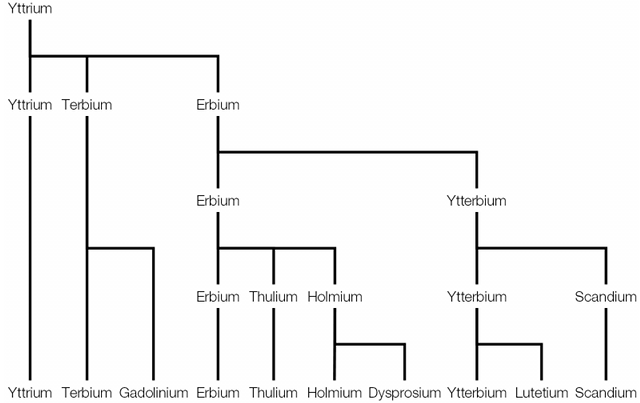Matter is made up of atoms, and each atom is one of (currently) 118 elements. But where did those elements come from?
Note: Each element has a different atomic number (represented by the symbol Z (from the German Zahl for number) which represents the number of protons in the element’s nucleus.
Hydrogen, Helium and Lithium (Z=1 to Z=3)
Hydrogen, helium and lithium were formed in the Big Bang, by a process called Big Bang nucleosynthesis. Unstable radioactive isotopes of beryllium were also formed, but those would quickly decay into other elements or fuse with other stable atoms.
Big Bang nucleosynthesis occurred from about one-tenth of a second to one thousand seconds after the Big Bang and involved the creation of protons and neutrons from the quark-gluon plasma that existed before it, and then the creation of hydrogen, helium and lithium from these protons and neutrons.
Beryllium to Iron (Z=4 to Z=26)
A process called stellar nucleosynthesis, where lighter elements are fused into heavier ones with the release of energy (i.e. an exothermic fusion reaction) is responsible for the creation of the elements from beryllium to nickel. Some nickel-56 and zinc-60 is also produced, but these are unstable and decay quickly to form iron-56 and copper-60. It is the decay of nickel-56 into iron-56 which is responsible for the high amount of iron-56 found in meteorites and planetary cores. (For example, both the Earth’s solid inner core and liquid outer core are composed primarily of an iron-nickel alloy.)
There are a variety of stellar nucleosynthesis processes responsible for the formation of these elements: the alpha and triple-alpha processes and the “burning” of lithium, carbon, neon, oxygen and silicon formed in earlier stages. Stellar nucleosynthesis is also responsible for the creation of more helium via the “burning” of deuterium, the proton-proton chain, and the carbon-nitrogen-oxygen cycle.
Cobalt to Californium (Z=27 to Z=98)
There are three processes responsible for the creation of elements heavier than iron: the S-process, the R-process and the Rp-process (sometimes called the P-process). The S-process (slow neutron capture) occurs in low- to medium-mass stars and is when neutrons emitted by fusion reactions between lighter elements are absorbed by heavy nuclei like iron; this process forms about half of the elements heavier than iron.
The R-process (rapid neutron capture) probably occurs in the core of core-collapse supernovae when electrons are forced back “inside” protons to produce an extremely high flux of neutrons which are rapidly absorbed (hence the name) by heavy nuclei like iron. The R-process forms about half of the elements heavier than iron, and most if not all of the heaviest elements like uranium.
A minority of the heavier elements are formed by the Rp-process (rapid proton capture), and these are all lighter elements (evidence suggests it cannot form elements heavier than tellurium (Z=52). It occurs in very high-temperature hydrogen-rich environments like the outer layers of a star undergoing a core-collapse supernova.
Trace amounts of heavier-than-iron elements with atomic numbers 92 to 99 were, and are, also produced naturally on Earth by radioactive decay processes.
Einsteinium to Ununoctium (Z=99 to Z=118)
Small amounts of the lightest of these elements may be produced as outlined above by the S-, R- and Rp-processes, but the majority of them have only ever been produced artificially, in laboratories, by humans. They are all extremely radioactive and have very short half-lives so only exist for tiny fractions of a second when they are created (e.g. element 118, ununoctium has a half life of about 0.9 milliseconds).
The processes by which these heaviest of the elements are created vary. Einsteinium was first detected as a by-product of the first fusion bomb (H-bomb) test, fermium is formed by bombarding lighter lanthanides with neutrons, and mendelevium by the bombardment of californium by alpha particles. The remaining elements have all been created by smashing together two larger nuclei: for example, ununoctium was first produced by colliding krypton-86 and lead-208.
